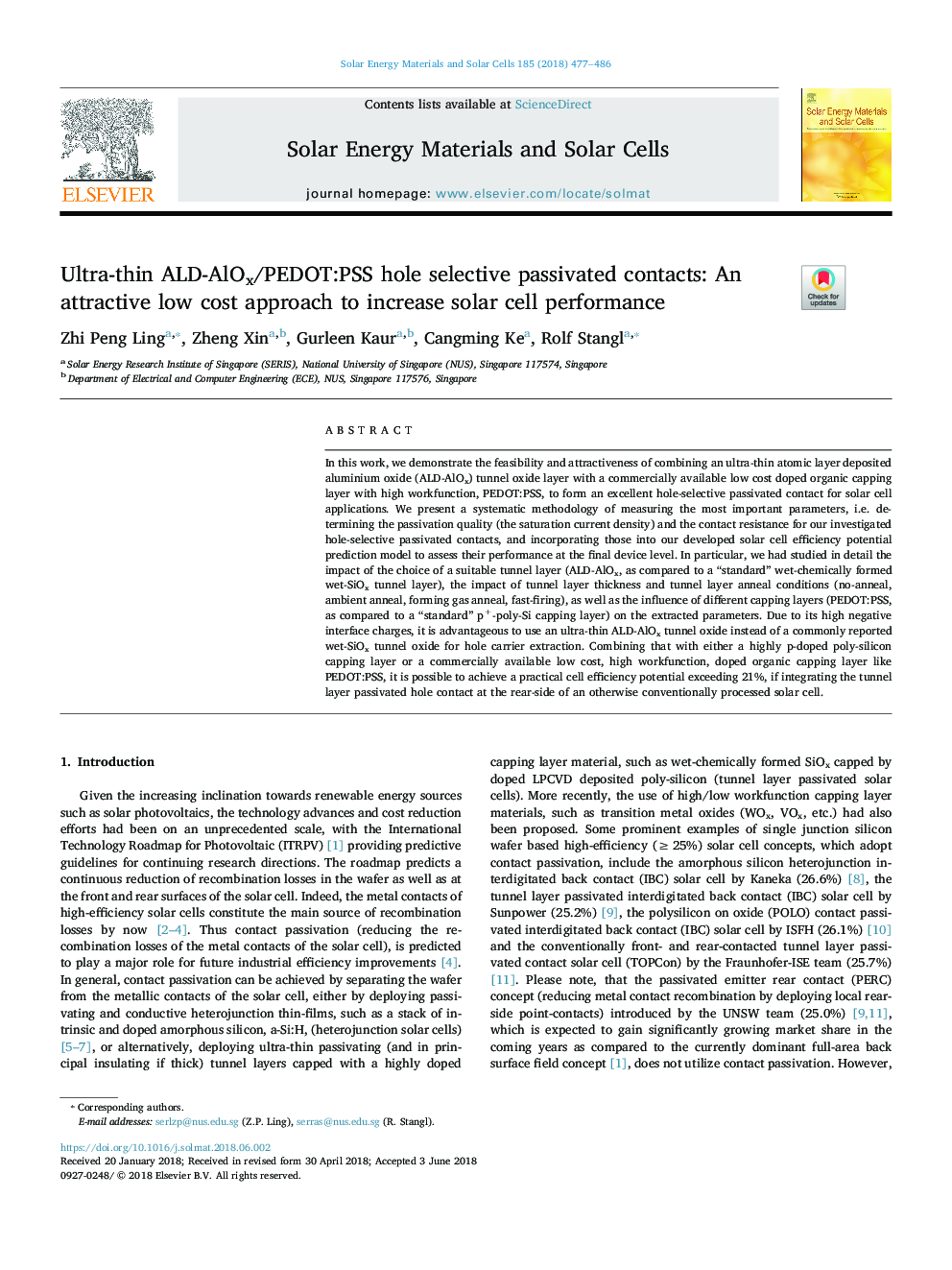| Article ID | Journal | Published Year | Pages | File Type |
|---|---|---|---|---|
| 6534027 | Solar Energy Materials and Solar Cells | 2018 | 10 Pages |
Abstract
In this work, we demonstrate the feasibility and attractiveness of combining an ultra-thin atomic layer deposited aluminium oxide (ALD-AlOx) tunnel oxide layer with a commercially available low cost doped organic capping layer with high workfunction, PEDOT:PSS, to form an excellent hole-selective passivated contact for solar cell applications. We present a systematic methodology of measuring the most important parameters, i.e. determining the passivation quality (the saturation current density) and the contact resistance for our investigated hole-selective passivated contacts, and incorporating those into our developed solar cell efficiency potential prediction model to assess their performance at the final device level. In particular, we had studied in detail the impact of the choice of a suitable tunnel layer (ALD-AlOx, as compared to a “standard” wet-chemically formed wet-SiOx tunnel layer), the impact of tunnel layer thickness and tunnel layer anneal conditions (no-anneal, ambient anneal, forming gas anneal, fast-firing), as well as the influence of different capping layers (PEDOT:PSS, as compared to a “standard” p+-poly-Si capping layer) on the extracted parameters. Due to its high negative interface charges, it is advantageous to use an ultra-thin ALD-AlOx tunnel oxide instead of a commonly reported wet-SiOx tunnel oxide for hole carrier extraction. Combining that with either a highly p-doped poly-silicon capping layer or a commercially available low cost, high workfunction, doped organic capping layer like PEDOT:PSS, it is possible to achieve a practical cell efficiency potential exceeding 21%, if integrating the tunnel layer passivated hole contact at the rear-side of an otherwise conventionally processed solar cell.
Related Topics
Physical Sciences and Engineering
Chemical Engineering
Catalysis
Authors
Zhi Peng Ling, Zheng Xin, Gurleen Kaur, Cangming Ke, Rolf Stangl,
